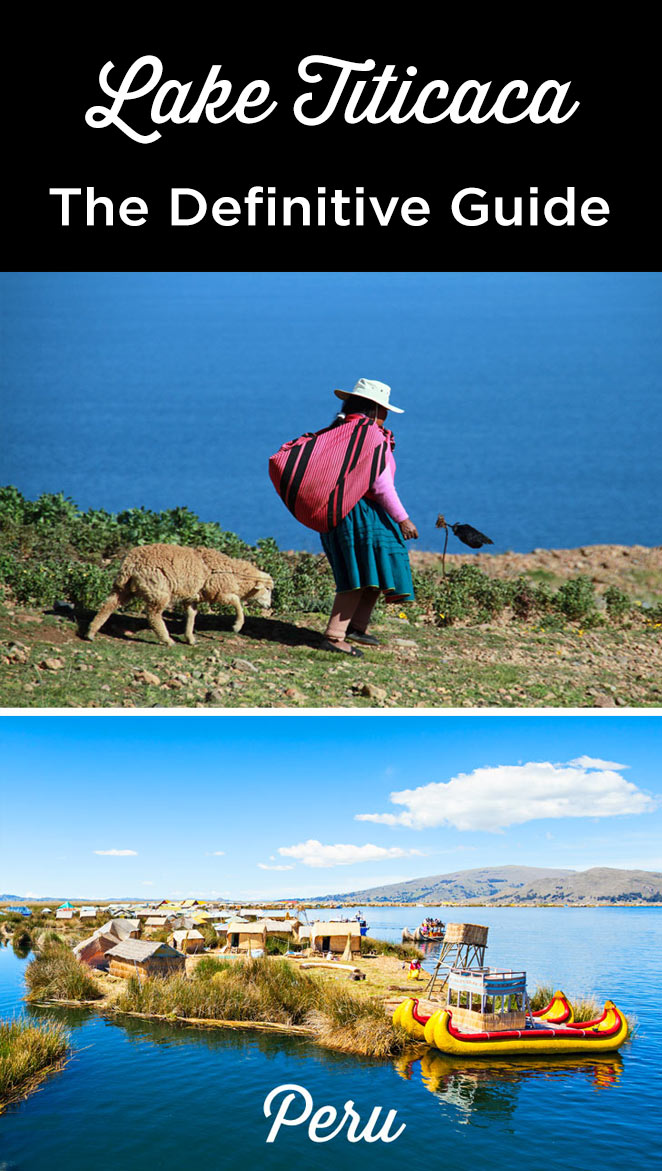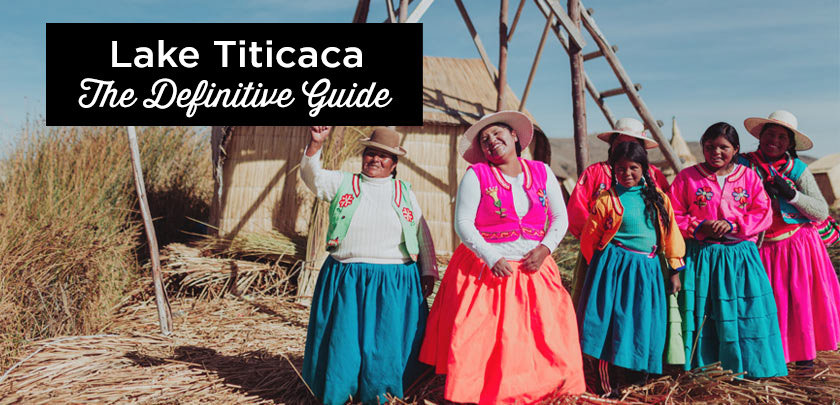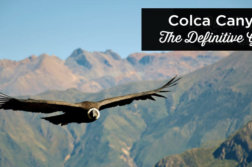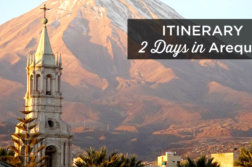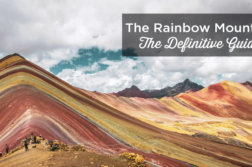How to Visit Lake Titicaca (Peru & Bolivia): Floating Islands, Tours, and Tips
Visiting Lake Titicaca means discovering the world’s highest navigable lake—and one of the most breathtaking natural borders between Peru and Bolivia.
Although it’s one of the Most Beautiful Destinations in Peru, there isn’t always a lot of clear info out there for travelers.
That’s why I’ve put together this complete Lake Titicaca guide—with everything you need to plan your visit smoothly.
It covers the main highlights on both the Peruvian and Bolivian sides of the lake, plus several less-touristy spots that most people miss.
You’ll also find recommendations and contacts to stay with local families, along with detailed tips on how to get to Puno and visit different communities around the lake.
So, what are the best things to do in Lake Titicaca?
Let’s find out!
Sommaire
Best Places to Visit in Lake Titicaca
1. Puno
Being honest, Puno is not famous for its great beauty, but it is a very important city for two reasons:
- Here is celebrated the Virgin of Candelaria a great colorful festivity, declared Intangible Cultural Heritage of Humanity by UNESCO, which brings together 50,000 dancers and 15,000 musicians
- Is the starting point of the tours to Lake Titicaca on the Peruvian side, which makes Puno a mandatory stop for all travelers who include Titicaca in their trip to Peru.
If you have a few hours to visit the city, here’s what you can visit in Puno:
- The Main Square and the Cathedral of Puno (1757) which has an interior façade of solid silver and beautiful paintings of the Cusco School
- The Casa del Corregidor near the cathedral, a beautiful 17th century house that now houses a café with a patio
- The Jiron Lima, the main street of the city from where you can access the Plaza de Armas
- The viewpoints of Kuntur Wasi, Puma Uta, Cerro Huajsapata a few blocks from the main square
- The Carlos Dreyer Museum located in a house declared Cultural Heritage of the Nation it presents 1800 artifacts from the pre-Inca, Inca, colonial and republican eras.
- The Puno Naval Museum (free of charge!) Address: Av. El Sol Nº 725
- The alpaca and llama farm of the Chincheros Farm 20 minutes from Puno. There are several activities (horseback riding, 4×4, hiking)
Where to stay in Puno?
Unless you take a bus or night train, you will arrive in Puno around 6pm like most people.
If this is the case, you will have to spend a night in Puno because the trip to Lake Titicaca depart in the morning.
Here are my recommendations of hotels in Puno for all budgets:
- Kaaro Hotel El Buho: A small rustic-style hotel with an excellent value for money, a few blocks from the center of Puno. Includes Wi-Fi, restaurant, and babysitting services. Breakfast included from $27 USD per night.
- Hotel Hacienda Plaza de Armas: A 3-star hotel ideally located on Puno’s Plaza de Armas. From $50 USD per night.
- Uros Titicaca Lodge: My top pick! Built on one of the floating islands of the Uros, it’s one of the most exotic hotels in Peru. If you can, I highly recommend spending at least one night here during your Peru trip. From $117 USD per night.
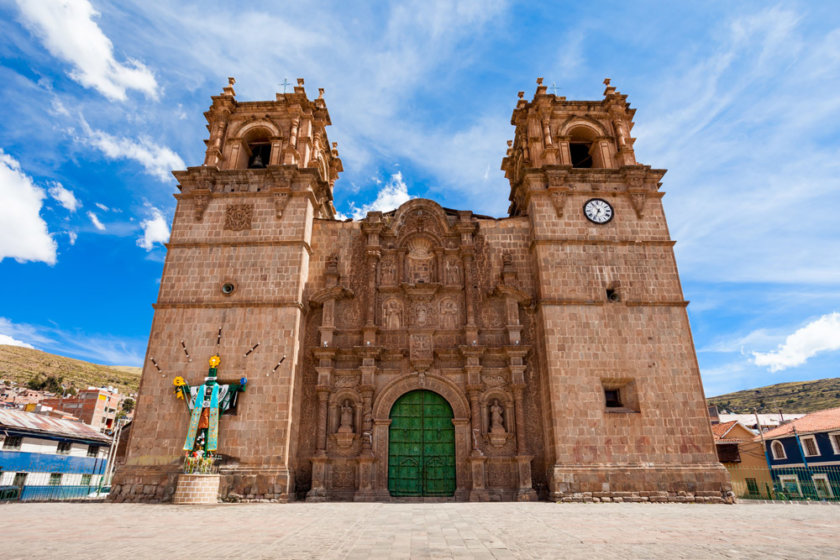
2. Sillustani
About 2 miles from Puno on the shores of umayo Lake is located Sillustani. It is a funerary complex built by the Kollas (13th-15th centuries), people who were conquered by the Incas in the 15th century.
There are 90 “chullpas”, circular stone tombs measuring between 10 and 13 foot. The largest is the Chullpa of the Lizard which is about 40 foot!
These tombs contain mummies in fetal position and various valuables (gold, ceramics, etc.).
It is a surprising site, not very touristic, and as it is located on a hill, offers a fantastic view of the surroundings.
Besides, the road is very nice because there are lots of sheep and alpacas!
How to get to Sillustani
By public transportation
- Take a bus to Juliaca from the Virgen de Fátima Terminal (Rosendo Huirse 198, Puno). Tell the driver you’re getting off at the turnoff to the chullpas (about 30 minutes, 3.50 soles). He’ll drop you off here.
- Cross the road and catch another bus heading to the entrance of the Sillustani chullpas (about 20 minutes, 3.50–4 soles).
- Important: These buses only run between 1:00 PM and 5:00 PM, so be sure to plan your return before 5:00 PM.
- The entrance fee to Sillustani is 15 soles.
With a tour from Puno
It is easier to visit Sillustani because you don’t want to worry about transporting them.
The tour to Sillustani includes pick up at your hotel in Puno, entrance fee and guide.
It takes you first to a lookout point with a nice view over Puno and its surroundings, then you pass by a farm with alpacas and finally arrives at Sillustani.
Book it here:
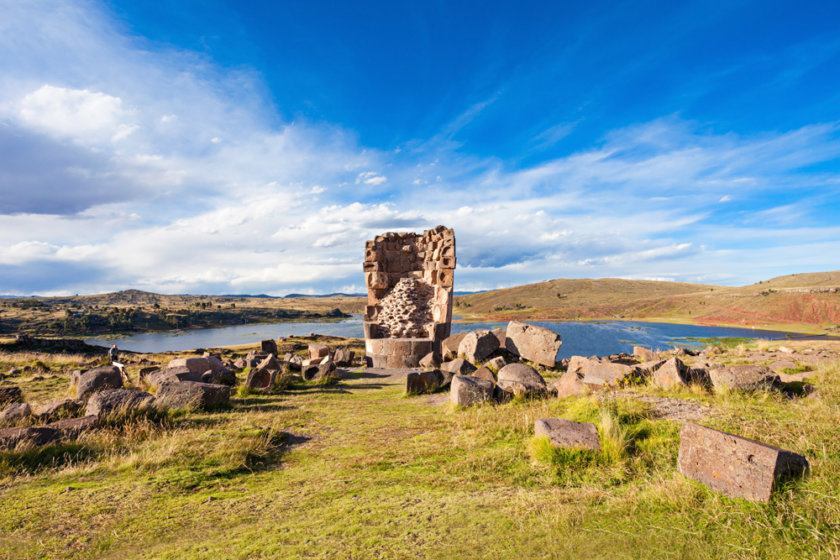
3. Cutimbo
If you want to see chullpas in a place even less touristic than Sillustani, you can go to Cutimbo.
It is one of the most important pre-Hispanic burial sites in the Andes, of the Lupaca, Colla and Inca peoples.
There are circular, rectangular and square chullpas of different sizes.
It is known that this strategically located site was occupied for a long time, as cave paintings have been found dating back 8,000 years.
The site was still in use when the Spaniards arrived in the 16th century, so some of the constructions are unfinished.
The entrance fee is 15 soles.
How to get to Cutimbo
- By car: this is the easiest way. Follow Highway 32, 13.5 miles southwest of Puno
- By public transport: take a combi (the terminal is near the cemetery) that goes in the direction of Laraqueri and get off at Cutimbo. There are departures every 30 minutes, it and the trip lasts 40 minutes, 5 soles. To go back, wait on the Puno-Moquegua route.
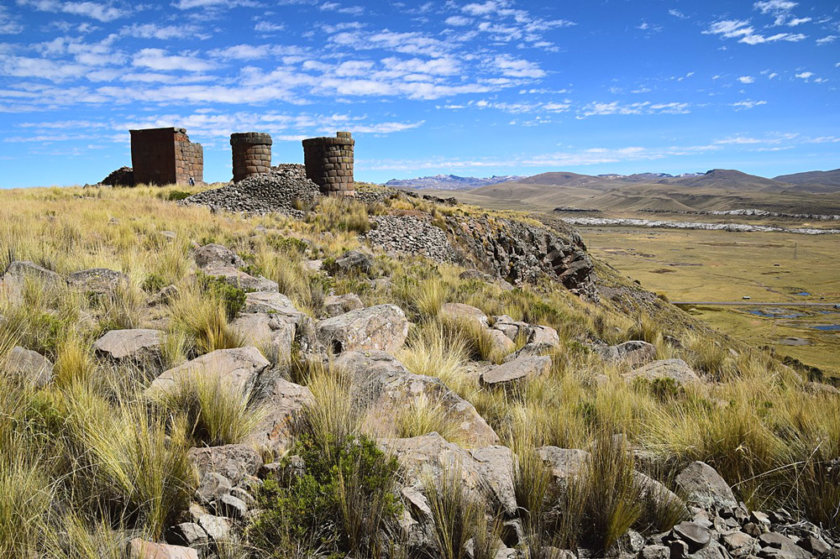
4. The floating islands of the Uros
The islands of the Uros are usually the first stop on Lake Titicaca excursions. There are over 80 artificial floating islands, all made of totora reeds!
Each island is home to at least one family and a chief, though some are much larger and even have a church, a soccer field, and more.
Guides often say the islands are inhabited by the Uru, but that’s not entirely accurate—the last “true” Uros abandoned their traditional lifestyle in the 1950s.
Photo here, shopping for handicrafts there? Some travelers find the experience overly commercial—and I have to say, I kind of agree.
To enjoy the floating islands, I think it’s important not to expect an “authentic” experience, but rather a living showcase where you can learn about the Uros’ way of life, how the islands are built by hand, admire their traditional clothing, and more.
What’s truly fascinating is how absolutely everything is made of totora reeds: the homes, the boats, the souvenirs—literally everything.
You can also take a totora reed boat ride for 10 soles.
- I invite you to read my article The Uros: How to Visit the Floating Islands of Lake Titicaca
How to visit the Uros
- The islands are only 20-30 minutes by boat from Puno.
- Everything works on a rotation system, so you can’t decide by yourself which island to visit. Agencies are in charge of taking groups to different islands so everyone can have an income.
- You can get to the Uros on your own by taking the collective boat that makes the round trip every day, between 6 am and 4.30 pm, for 15 soles a trip (+8 soles entrance fee to the Uros).
You can also take the tour to the Uros with pick up at your hotel in Puno, booking it here:
Another, much better option is to take a tour to the Uros and Taquile Island, which is a magnificent place you have to visit in Lake Titicaca.
It is a one day tour that includes pick up from your hotel in Puno, entrance fees, guide, a short hike and lunch in Taquile:
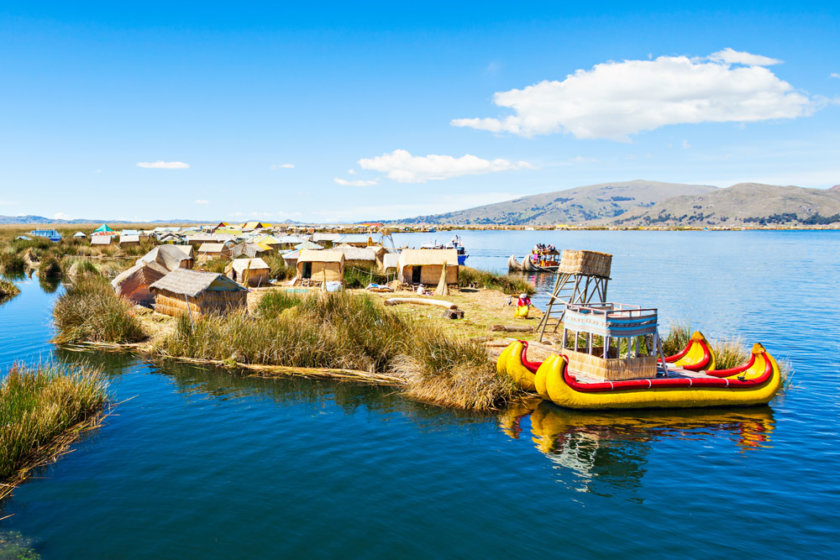
5. The Uros Titino Islands
Want to see floating islands less touristy than the Uros?
Head to the Titino Islands!
The “classic” Uros islands are very close to Puno and that’s why they are so touristy.
As the Uros Titino floating islands are further away, their inhabitants receive only a few small groups per week and therefore the visit is much more pleasant.
They are islands that host between 3 and 8 families, and are relatively close to the Capachica Peninsula and the island of Taquile.
It is a good stop to make in Lake Titicaca after spending the night in Taquile or Llachon.
How to get to the Uros Titino Islands
- It is best to go first to Llachón on the Capachica Peninsula, and then take a boat to the Uros Titino Islands (40 min)

6. Taquile Island
Taquile is a beautiful island in Lake Titicaca!
It is one of my favorite islands for its landscapes, between agricultural terraces and small roads.
Its inhabitants were quite isolated from the rest of the country until the 50’s, which allowed them to preserve their autonomy and traditions.
Today they live from fishing, potato farming and tourism, which is developed in a communal way.
The Taquileños are known for their textile art and it is impressive to see that all members of the community – men, women and children – participate in this activity.
This tradition is so important that it has been declared Intangible Heritage of Humanity by UNESCO in 2008!
The most characteristic garments are the chullo (Andean cap) and the belt, created with ancestral weaving techniques.
They also maintain the same styles as they contain important symbols. For example, the chullos indicate the marital status of the men.
What to see and do in Taquile:
- Go to the handicraft market in the Plaza de Armas
- Stroll along the beaches of Collota and Huayllano
- Climb up to the Mulsina Pata lookout point, the highest point in Taquile. It is a ceremonial place and offers a magnificent view of the surroundings.
How to visit Taquile
The island is 2h30-3h by boat from Puno.
There are several ways to get to Taquile from Puno:
1. On your own (without agency)
Taking the collective boat is the cheapest way to get to Taquile. There is only one departure per day at 7:30 am from the port of Puno. The return from Taquile is at 2:20 pm and arrives in Puno at 5 pm.
The round trip ticket to Taquile costs 30 soles. The boat passes by the Uros and for 8 soles (optional) you can get off and visit. The problem is that if you don’t want to visit the Uros, you still have to wait 1h30.
2. With a tour
The advantage of taking a tour of Lake Titicaca is that you can make the most of your time, without worrying about transportation or organization.
I recommend these two options:
- The day tour: includes pick up from your hotel, visit to Uros and Taquile, with lunch (7am to 4pm). Book it here:
- The two-day tour: includes pick up from your hotel, visit to the islands of Uros, Taquile and Amantani. You will spend one night in the home of an Amantani family with activities and meals. Book it here:
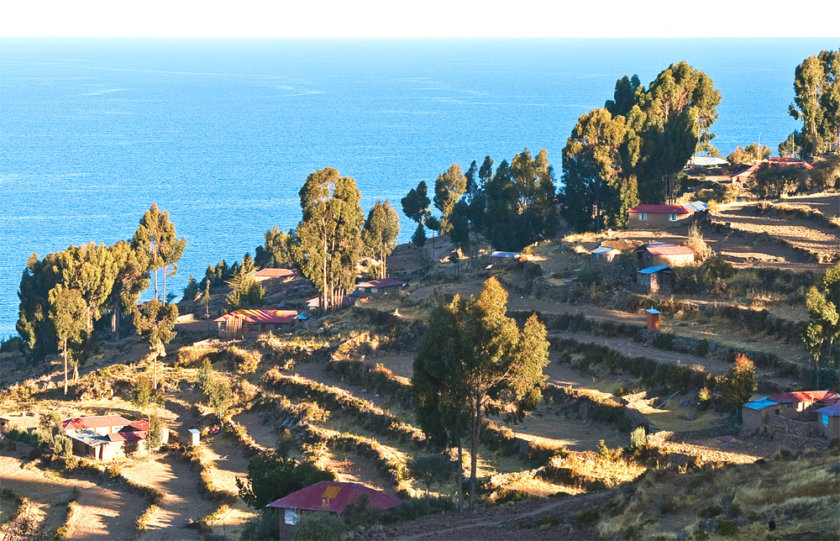
7. Amantaní Island
Located in front of the Capachica peninsula, Amantaní is the largest island of Lake Titicaca, on the Peruvian side.
Its 10 communities live mainly from the cultivation of potatoes, quinoa, corn, barley and beans.
It is a beautiful island to visit in Lake Titicaca with agricultural terraces and cantutas, the national flower of Peru and Bolivia, also known as “the flower of the Inca”.
The best activity to do in Amantani is to climb the hills of Pachatata (father sky) and Pachamama (mother earth) considered as the protectors of the island.
You can get there by passing through the communities of Colquecachi, Sancayuni and Santa Rosa, walking about 45 minutes.
They are ceremonial places where you can find Inca and Tiwanaku ruins, but their main attraction is the panoramic view of Lake Titicaca, especially at sunset!
I really recommend staying in a homestay in Amantani, because it is an unforgettable experience.
It is a unique opportunity to share a moment with a local family.
How to visit Amantani
1. On your own (no agency)
- From Puno: as in the case of Taquile, the cheapest way to go to Amantani is to take the collective boat. The round trip ticket costs 20 soles, and there is only one departure per day at 8:00 am.
- From Capachica: boats leave every hour from the port of Chifrón in the direction of Amantaní, there are only departures at 8:00 am and 3:00 pm. 10 soles.
2. With a tour
The two-day tour: with pick up at your hotel in Puno, visit to the Uros, Taquile and Amantani. You will spend one night on the island of Amantani with activities and meals. Book it here:
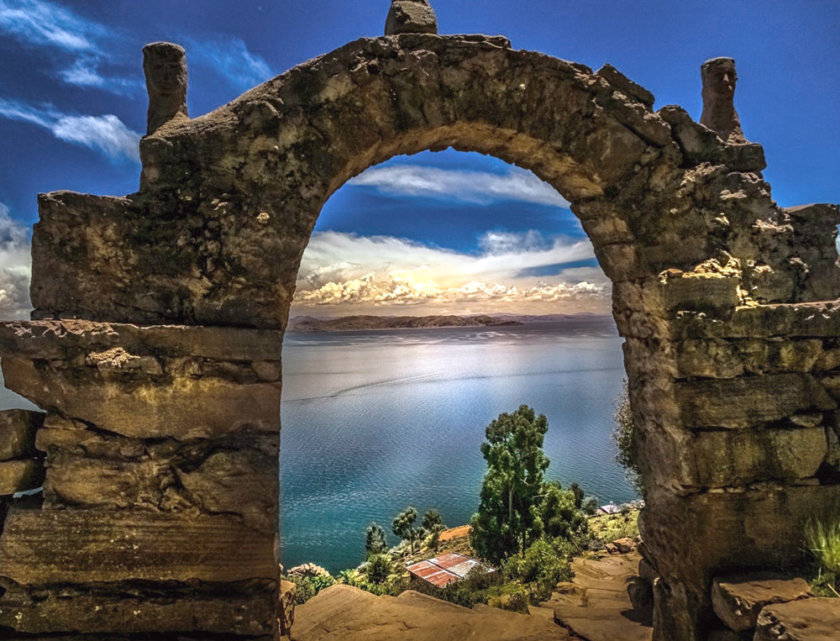
8. The Capachica Peninsula
The Capachica peninsula is considered a less touristy alternative to Taquile or Amantaní, to sleep in a Titicaca family’s home.
I recommend going to Ccotos and taking the Ancasayana Pucusan Saiwanu scenic road.
First you will reach the viewpoint of Ancasayana where you will find the ruins of a fortress of the Colla people (XII-XV century) with a magnificent view of Lake Titicaca and the island Ticonata.
Continuing along the trail, you will pass by a pre-Inca cave, the community of Siale and some chullpas, until you reach the viewpoint of Pucusan Saiwanu.
From there you can see 6 islands of Lake Titicaca: Isañata, Ticonata, Uki, Amantaní, Isla del Lagarto and Taquile.
If you like outdoor activities, it is also possible to rent a kayak in Llachón to explore the surroundings.
- I invite you to read: Llachón: Where and How to Sleep in a Family Home?
How to get to Llachón and Capachica from Puno
- Take a bus from Puno to Capachica (1h, 4 soles) on Jiron Lampa, near the Bellavista market.
- Then take another bus from Capachica to Llachon (30 min, 3 soles).
- If you leave early in the morning there are also direct buses to Llachon (7 soles).
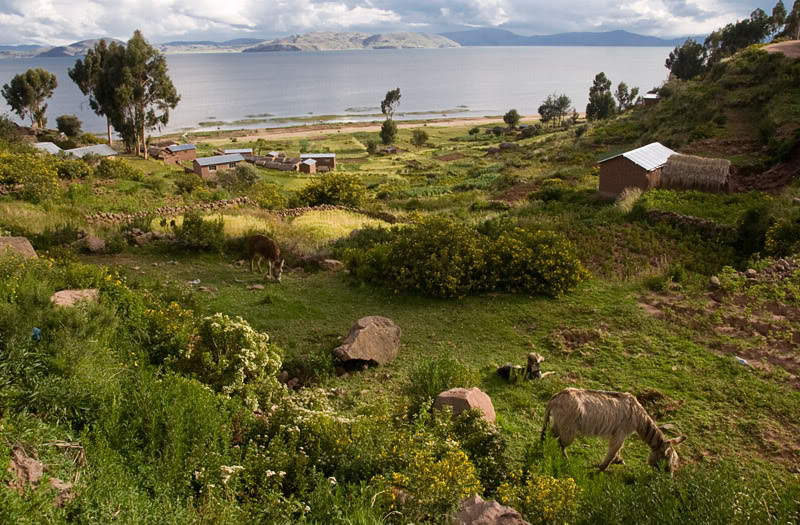
9. The island of Ticonata
Ticonata or Tikunata is a small island located in front of the Capachica peninsula.
Its inhabitants are originally from the community of Ccotos in Capachica.
There are hiking trails, beautiful traditional houses, small beaches and a lookout point that offers an incredible 360 degree view of the surroundings.
Spending a night in Ticonata and participating in various ecotourism activities, you can discover the traditional customs of its inhabitants.
The experience lasts two full days: artisanal fishing, construction of a traditional oven for food, sheep herding, hike to the Cruzpata viewpoint, coca leaf ritual, bonfire with traditional dances, visit to the uninhabited Uki Island, etc…
There is even a museum with mummies found on the island!
How to get to Ticonata
- From Puno: take a bus at the corner of Jiron Lampa and Avenida Costanera, 1h30 trip
- From Capachica: about 40 minutes by boat from Chifrón or 20 minutes from Ccotos
10. The southern route
If you have time and desire to explore other Lake Titicaca destinations without tourists, you can take highway 3S (southbound) from Puno.
This is what you will be able to visit:
- Inca Uyu: this is a rather curious fertility temple in Chucuito, where there are more than 80 phallic sculptures.
- Aramu Muru: also known as the Altarani Gate or Marca Hayu, it is a door carved in a stone in the shape of a condor’s head. According to legend, it is an interdimensional door and was mentioned in the famous book The Secret of the Andes by George Hunt Williamson.
- Juli: nicknamed “The Little Rome of the Americas” for its 4 beautiful churches (San Juan El Bautista, San Pedro Mártir, Santa Cruz and Nuestra Señora de la Asunción) of andean baroque style with magnificent paintings of the Cuzco School.
- Pomata: it has magnificent colonial churches such as Nuestra Señora del Rosario and especially Santiago Apóstol. As Pomata is located on the shores of Lake Titicaca, the city offers a magnificent view of the lake and the Copacabana peninsula.
If you are interested in the mysticism of Lake Titicaca, I recommend this unique experience that includes visiting the temple of Chucuito and the site of Aramu Muru, and participating in a ritual offering to Pachamama (with cereals, coca leaves, chicha, etc.) with a shaman:
11. Luquina
The Chucuito Peninsula forms, with the Capachica Peninsula, the bay of Puno.
It is a 19 miles peninsula with beautiful hills and 45 chullpas (similar to those of Sillustani and Cutimbo).
Among its communities is Luquina Chico, an Aymara village that has decided to open its doors to travelers interested in experiential tourism in Lake Titicaca.
It is a destination with very few tourists, where you can enjoy peace and tranquility, among sheep, chickens, donkeys and pigs.
You can fish, learn to weave, cut firewood, cook, kayak and hike, and participate in the village festival with typical music.
In short, one comes here to live an authentic rural experience, far from the traditional tourist circuits.
The community members speak Aymara and a little Spanish, but they are so friendly that language is not a barrier.
They have made a great effort to attract travelers and offer rooms with private bathrooms, showers and hot water, which is unusual for lodges on Lake Titicaca!
How to get to Luquina
- From Puno, take the bus (10 soles)
12. The Socca Peninsula
Socca is an agricultural community located on another beautiful peninsula of the Titicaca.
Its inhabitants live from artisanal trout fishing and agriculture (quinoa, wheat, potatoes and barley).
You can, for example, walk to the hills of Auki Parki, Kuntur Wawachaw, Chacarina and Caracoyo, which are beautiful natural viewpoints, and visit the beach of Iscata.
13. The community of Anapia
Anapia is part of an archipelago of 8 islands located in Lake Wiñaymarca, very close to the border with Bolivia.
The main buildings are located on the island of Anapia, and the other islands are used for livestock and agriculture.
Community-based tourism in Anapia allows you to visit the other islands by sailboat, including Yuspique where vicuñas live.
You can also hike with a view of the snow-capped mountains and go out with the fishermen, if you are an early riser.
To get to Anapia
- From Puno, you have to go first to Yunguyo (2h30), then to the port of Punta Hermosa (30 min) and take a boat to Anapia (2h30)
Bolivia
14. Copacabana
Copacabana is a small and quiet town in Bolivia, located on the shores of Lake Titicaca, whose main feature is its proximity to the Isla del Sol and Isla de la Luna.
You can visit the basilica and stroll along the bay of Copacabana, but its most beautiful tourist attractions are its viewpoints of Cerro Calvario and Horca del Inca that offer a magnificent view of the city and Lake Titicaca.
Especially at sunset!
How to get to Copacabana from La Paz
- Take a bus to Copacabana (total trip 4-5 hours, about 30 bob)
- Once in Tiquina (3h), you will have to get off to board a small ferry (3 bob) and once you get to the other side, you will take another bus
- There are several bus companies, such as Transtiticaca with 2 departures, one at 8:00 am and one at 1:30 pm
How to get to Copacabana from Puno
- Take a bus from the bus terminal in Puno (3h) Companies: Trans Titicaca, Transzela.
- You can also take a 1 day tour from Puno to visit Copacabana and Isla del Sol. Includes transfer from your hotel, lunch in Copabana, hike to the Isla del Sol and return to Puno at 20:30
Where to stay in Copacabana?
- Hostal Piedra Andina: With its pretty white facade, multiple terraces and balconies, it almost feels like Greece. Overlooking the lake, it offers comfortable rooms, breakfast included, and access to a shared kitchen. From only $30 USD per night!
- Hostal Las Olas: A very original hotel that looks like a colorful fairytale village. It boasts stunning views of Copacabana Bay, hammocks for relaxing, llamas and alpacas in the garden, and access to a kitchen. If you’re traveling on a mid-range budget, this place is a must! From $75 USD.
- Hotel Rosario Lago Titicaca: Looking for a high-end stay on Lake Titicaca? This European-style hotel is located right by the water and offers stunning sunset views through its large windows and from its terrace. From $85 USD per night.
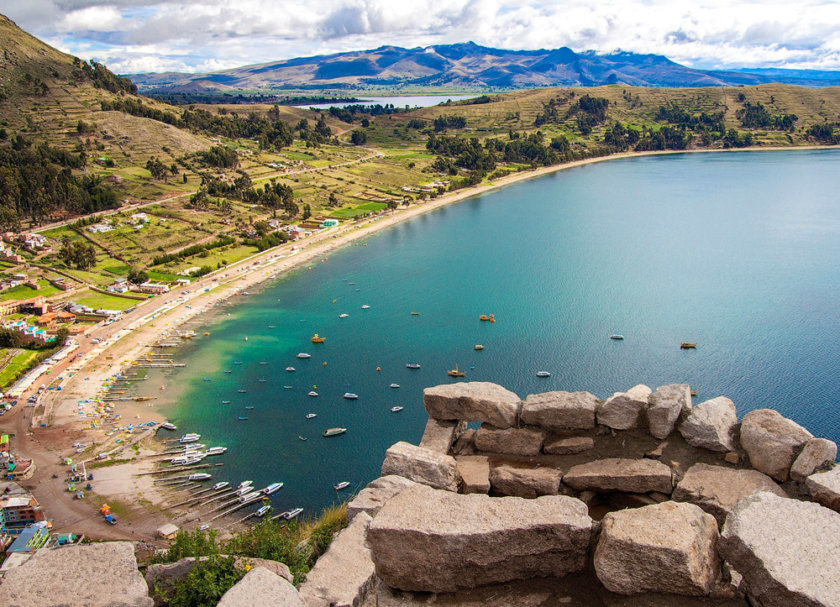
15. Sun Island
Isla del Sol is the largest island of Lake Titicaca.
It is beautiful and there are mainly two ways to cross it, by the beach or by the hills.
Particularly, I have walked the path of the hills (about 4 miles in 3-4h) and I speak on its behalf because it offers a beautiful view of the island.
It is also very quiet and you meet very few travelers.
Along the trail there are some toll booths, whose income is managed by the communities. So bring some change (30 bob) and keep your tickets because you may be asked for them later!
Things to do in Isla del Sol:
- In the north: gold museum, Kasapata beach, Titikala sacred stone and ceremonial altar, Chinkana (Inca labyrinth)
- In the south: the stone staircase of 222 with its Inca fountain in Yumani, the Inca palace of Pilkokaina
How to get to Isla del Sol from Copacabana
- The boat trip lasts 2h (30-40 bob)
- Departure from Copacabana at 8h30 and 13h30 to Challapampa or Yumani
- Return from Challapampa: 8h30, 10h30, 13h30
- Return from Yumani: 8h30, 10h30, 16h30
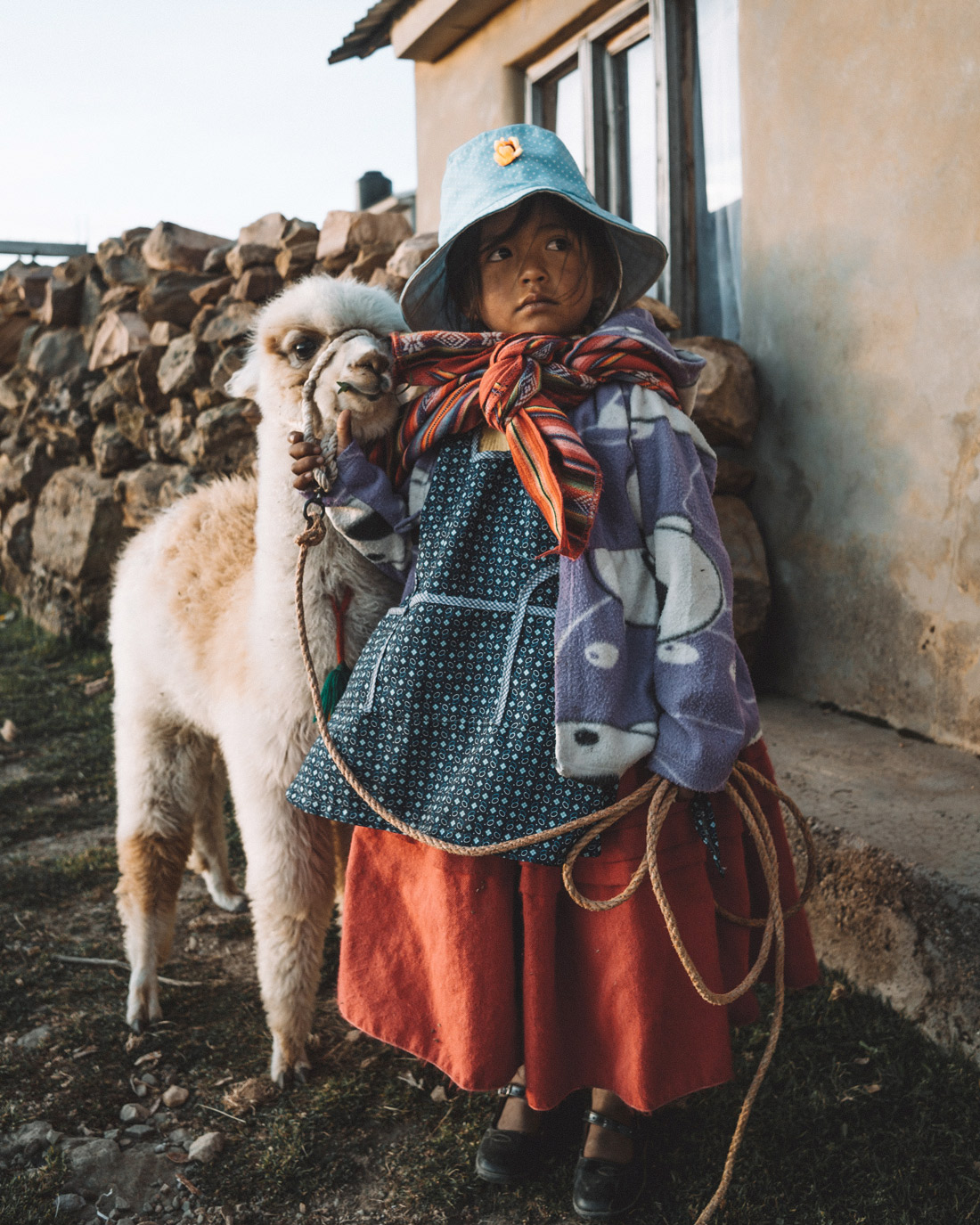
16. Moon Island
Isla de la Luna or Koati Island, is a small island only 1.8 mile long and half mile wide.
The main tourist attraction of the Moon Island is the Palace of the Virgins of the Sun (Iñak Uyu), a very well preserved building with 35 rooms where the chosen women of the empire met.
The women destined to be the Inca’s concubines learned to weave and cook, and those who were to be sacrificed went through a purification process.
In both cases, it was a great honor!
After visiting the palace, you can climb the hill to get a magnificent view of the surroundings.
How to visit Moon Island
Isla de la Luna is 5 miles from Isla del Sol, so you can see both islands in one day if you leave early in the morning.
If you have more time, you have two options:
- Day 1: visit and spend the night on Isla del Sol
- Day 2: visit Moon Island and return to Copacabana
or
- Day 1: visit Moon Island in the morning, in the afternoon visit and spend the night in Isla del Sol
- Day 2: return to Copacabana
How to get to Moon Island
From Copacabana, you must take the ferry to Isla del Sol ( 8.30 and 13.30, 25 bob). The same ferry continues its route to Moon Island (entrance to the island costs 10 bob) and takes about 1 hour.
I recommend you to confirm in advance if the boat will go to Moon Island, as it only goes when there are enough passengers.
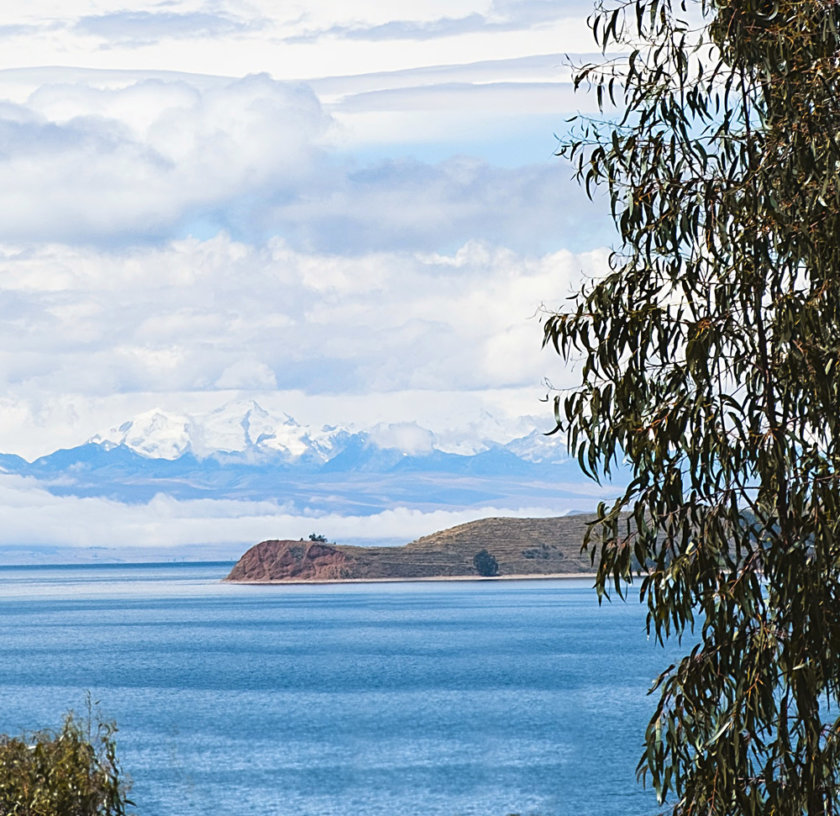
17. Tiwanaku
Nine miles from Lake Titicaca is Tiwanaku or Tiahuanaco, one of the destinations to visit in Bolivia, declared a World Heritage Site by UNESCO.
The archaeological site is named after the Tiahuanaco culture (5th-11th century), which inhabited it, and which is considered one of the most important cultures in the Americas.
There are many things to see in Tiahuanaco:
- Akapana Pyramid
- The temple of Kalasasaya (the largest of Tiahuanaco) with the Sun Gate and the monoliths “Ponce” and “El fraile”
- The semi-underground temple with its 175 carved heads and the monolith “Barbado”
- Pumapunku or Gate of the Puma
- The museum of Tiahuanaco where the monolith of the Pachamama (or Bennett), the most famous of the site, weighs 20 tons and measures 23 foot in height
Entrance 100 bob. Open from 9h to 4h
How to get to Tiwanaku
- From La Paz: by bus from the General Cemetery of La Paz (15 bob) or from the bus terminal (50 bob, more comfortable). There are also tours from La Paz. The trip takes 1h.
- From Desaguadero (the border): take a cab to the town of Tiwanaku or a bus to La Paz that can drop you off on the way to the ruins (half mile from the town).
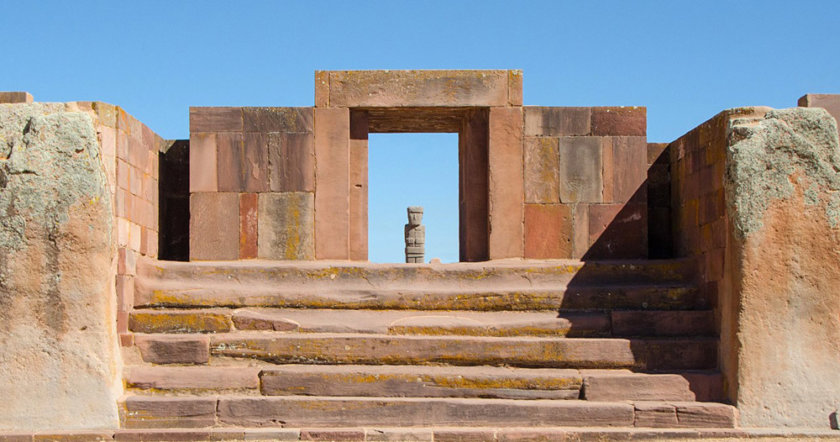
Experiential tourism in Lake Titicaca: sleeping in a family’s home
Spending the night with a local family on Lake Titicaca is one of the most meaningful ways to support the local economy and get a glimpse into daily life on the islands.
Just keep in mind: these are very basic, rustic accommodations—often without running water, a shower, or electricity. It’s part of the charm, but good to be prepared!
The cost is usually between 70 and 80 soles per person, per night, and includes meals (simple, homemade food—think soup, potatoes, that kind of thing).
It’s a beautiful opportunity to connect with the local culture. They’ll even lend you traditional clothing so you can join in the festivities—dancing, music, the whole village vibe.
Depending on the community you visit, there might also be activities like fishing, helping in the fields, herding sheep, or even cooking together.
Over the years, I’ve collected some reliable contacts for staying overnight on Lake Titicaca, which I’m happy to share with you here.
If you have others, feel free to mention them to me!
Taquile
- Hector: 70 soles with meals (+51) 988 394 950, instagram: @tucasaentaquile and @tucasaentaquile2
- Celso family – Reservation at night here!
Amantani
- Dario and Gloria (Muña Wasi & Lodge) +51 948 796 325
- Gerardo 968 503 608
Capachica Peninsula
Llachón
- Felix Turpo Coila: tel 951-664828 or 950-011109, hospedajesamary@hotmail.com If I remember correctly, the price is 50 soles (3 meals included)
- Freddy and Jessica: 50 soles (3 meals included) per person, tel 982445552
- Juana and Victor: 60 soles (3 meals included) per person, tel (+51) 962 323 630
- Luis (whatsapp +51951613779) and Antonia (whatsapp +51941292811) 80 soles per night with 3 meals – search “SUMAQ HILLARY” in google maps
- Posada de Oliver +51 927808712 – Facebook
Paramis
- Venancio Cahui Quispe: tel (+51) 983 374 722,paramis.turismo@gmail.com
- Balbino Quispe, Asociación de Promoción Turística El Valle de Paramis: (+51) 950-949705 y (+51) 950-812857
Chifrón
- Walther Pancca Paucar: tel (+51 051) 950- 936611, titikaka.peru@yahoo.es, titikakaintiwasi@hotmail.com
Ccollpa
- Richard H. Cahui Flores (Asociación Agro Turismo San Pedro – Ccollpa): tel (+51 051) 951-637382, (+51 051) 951-050076, collpallachon@hotmail.com
- Dorca Cahui Parillo (Asociación de Servicios Turísticos Pacha – Ccollpa): tel (+51 051) 951-311622, (+51 051) 951-314563
Escallani
- Rufino Paucar Pacompia (Asociación Turística Munay Suyo): no website or phone, but once in Escallani you can ask where the association is
Ccotos
- Santos Ramos (Posada Ccotos – Asociación Comunal de Turismo Rural), tel (+51 051) 951 620826, korythica@hotmail.com
- Alfonso Quispe Acuña (Asociación Inca Samana tours), tel (+51 051) 951 856462, (+51 051) 951 912805, incasamanatours@yahoo.es
Ticonata
- Marino Humpiri Charca (Cultural Association of Tikonata Island): tel: (+51 051) 951-664881, (+51 051) 951-534322
Luquina
- Orestes Ramirez Nina: luquinaorestes@gmail.com, reservasluquina@gmail.com, 051 982 378 850 – 965 187 454
- Arturo and Angela (Hospedaje Flor de Kantuta) 51 973 136 560
Map of Lake Titicaca
Here are all the attractions of Lake Titicaca in Peru and Bolivia mentioned in the article.
How to get to Puno?
From Cusco
You can get there in different ways:
- By direct bus: the trip takes about 6h30. There are departures at 8:30 am or at 10:00 pm for the night bus. –Book your ticket here!
- By tourist bus: on a full day tour with stops at places like the church of Andahuaylillas, Raqchi and Pukara. –Book your tour here!
- By train: with Peru Rail (departures from Wanchaq station).
- By plane: Cusco-Juliaca flight, followed by transportation to Puno.
From Arequipa
- By direct bus: the trip takes about 6h30, with daily departures (e.g. Cruz del Sur at 8:30, 14:00, 22:30 or 4M at 13:00). Book your ticket here.
- Combining with the Colca Canyon: you can do a 1 or 2 day tour to the Colca and finish in Puno. Book the 1 day tour | Book the 2 day tour.
- By plane: flight Arequipa-Juliaca, then ground transportation to Puno.
From Lima
There is no direct bus. You have to make the trip in two parts:
- From Lima to Arequipa: bus from 15h to 17h.
- From Arequipa to Puno: bus 6h30.
My advice: take a night bus to Arequipa, spend the day visiting the city, and then continue with another night bus to Puno.
From the Colca Canyon (Chivay)
- By direct transport: van from Chivay to Puno (6h-6h30). Book your transfer here.
- With a tour: Colca Canyon tour ending in Puno (1 or 2 days). Book the 1 day tour | Book the 2 days tour.
From Copacabana (Bolivia)
To cross from Bolivia to Peru:
- Bus departures from Copacabana to Puno in the morning (7:15 am) or afternoon (2 pm with TransTiticaca).
Important: the bus makes a stop to pass migrations at the border.
By private car
- From Lima to Puno: about 18 hours (via Arequipa).
- From Cusco to Puno: about 6h-6h30.
- From Arequipa to Puno: about 5h.
Rent a Car in Peru
Renting a car is one of the best ways to explore Peru at your own pace and make the most of your trip!
Personally, I always use Booking.com Cars for a few key reasons:
- Easily compare prices from all major rental agencies in one place—finding the best deal has never been easier!
- Free cancellation on most bookings, so you can reserve with peace of mind.
- Better insurance coverage at a lower price than rental companies—saving you money with no extra effort.
Click the button below to find the best car rental deals in Peru:
By train
- Regular train with Peru Rail: departure at 7:50 am from Wanchaq, arrival at 6 pm.
- Belmond Andean Explorer luxury train: 1 or 3 day circuits with activities included.
By plane
If you are short of time, you can take a flight to Juliaca: 50 min from Arequipa, 1h40 from Lima, 54 min from Cusco (or 4h with stopover in Lima).
If you want to find a cheap flight ticket to Peru, I recommend you to use our comparator, in partnership with Skyscanner: it is the guarantee to get the best price for your international flight and domestic flights!
Book Your Flight at the Best Price
Planning a trip to Peru? To get the best deal on your flights, I recommend using this flight comparison tool, in partnership with Skyscanner.
It’s the easiest way to find the lowest prices for both international flights and domestic flights within Peru—ensuring you pay the best rate with no hassle!
Which is the better side of Lake Titicaca: Peru or Bolivia?
This is a question I often receive from travelers who are lucky enough to have enough time to do a Peru and Bolivia Route.
This is a question I often receive and the answer is not simple.
My Bolivian family had always told me that Bolivia had the “Titi” and Peru had the “caca”.
And when I arrived in Peru at the age of 22, I heard the same joke…in reverse!
But then: whose “titi” is it?
There is no right answer.
The landscapes are magnificent on both sides, but it is true that nowadays the Peruvian side is more developed and touristic than the Bolivian side.
My last tips for visiting Lake Titicaca
1. There is no internet in Lake iticaca, so bring something to read: it will be useful to pass the time on the boat and when it gets dark and there is nothing else to do…
2. Bring water and snacks, as it is difficult to find a place to buy them outside of Puno.
3. Have cash in soles for any purchases or incidentals. Cards are not accepted and can only be withdrawn at ATMs in Puno.
4. Walk slowly when climbing hills or stairs. At 12,500 feet it is normal to be out of breath (and not just literally), but if you avoid heavy physical exertion, you can limit the effects of mountain sickness such as nausea and headaches.
When to visit Lake Titicaca?
The best time of year to visit Lake Titicaca is before or after the rainy season, between December and March.
Also keep in mind that the high tourist season is from July to August and is best avoided if you want to stay calm.
Although it can’t compare to the mass tourism in Machu Picchu!
What to take to Lake Titicaca?
In the Andes, due to the altitude, it is always hot during the day with the sun and cold at night.
If you spend the night on an island in Lake Titicaca, you should know that the homestays do not have heating.
It is best to bring light, warm clothing (including a warm hat and gloves), which you can put on and take off when the temperature changes.
Also bring sunscreen, hat/cap, sunglasses, as the sun’s rays are very strong at this altitude and especially when reflected on the lake.
Will I feel the altitude at Lake Titicaca?
It is possible, because the symptoms of altitude sickness can be felt from 2300m above sea level and Lake Titicaca is at 12,500 foot above sea level.
But there are several factors to take into account:
It all depends on the person: some feel it much more than others and it is impossible to know in advance how your body will react. It’s much more than a question of physical condition or age, it’s a bit like the lottery.
That’s why it’s always very important to take care of your body when you reach this altitude: eat lightly, avoid physical exertion, don’t smoke, hydrate well and avoid alcohol.
But the most effective way to limit the effects is simply to climb gradually. So take this into account when organizing your itinerary in Peru, going first to Arequipa or Cusco and avoiding the direct Lima-Puno trip.
Rent a car
Book entrance tickets and guided visits
Take a travel insurance
Book a tour
✈️ Book your flight
Traveling to Peru? These articles will help you!
Discover all my articles about Peru: All my tips and itineraries to plan your trip in one place!
40 EPIC Things to Do in Peru (+ My Best Tips)
- Machu Picchu: Tickets, Circuits, and Top Tips to Plan Your Visit
- Huayna Picchu vs. Machu Picchu Mountain: Which Hike is Best?
- 25 Epic Things to do in Lima (+ Tips)
- 30 Epic things to do in Cusco (+Tips)
- Itinerary: 5-6 days in Peru – Lima, Arequipa, Colca Canyon, Cusco, Sacred Valley and Machu Picchu
- Itinerary: 7-8 days in Peru – See the maximum in one week
- Itinerary: 10 days in Peru – The ideal itinerary for a short stay in Peru
- Itinerary: 2 weeks in Peru – The classic route
- Itinerary: 15 days in Peru – An itinerary that includes northern Peru
- Itinerary: 3 weeks in Peru
- Itinerary: 3 weeks in Peru + Bolivia – The best itinerary for visiting both countries
- Itinerary: 1 month in Peru – What to see and do in 30-31 days
You’re using Pinterest? Here is the picture to pin!
